Building of the Day: 1337-1351 Pacific Street
Brooklyn, one building at a time. Name: Row houses Address: 1337-1351 Pacific Street Cross Streets: Nostrand and New York avenues Neighborhood: Crown Heights North Year Built: 1879-1879 Architectural Style: Italianate, with Neo-Grec detail Architect: Amzi Hill Other buildings by architect: Several other Italianate and Neo-Grec row houses in Crown Heights North, most of his work in…
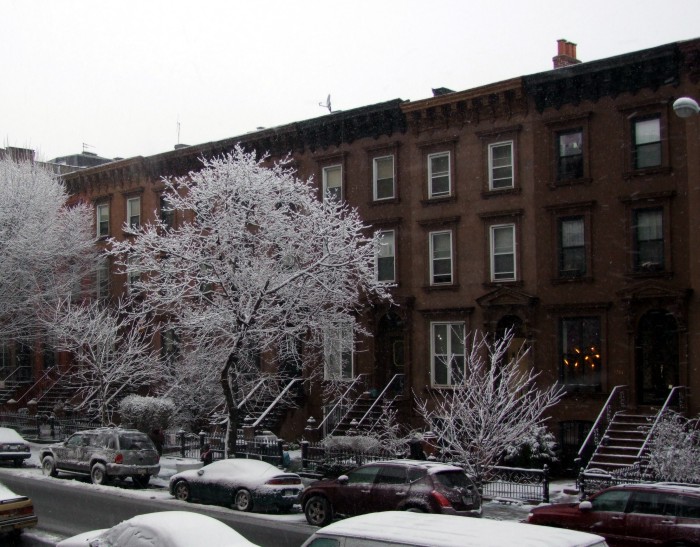

Brooklyn, one building at a time.
Name: Row houses
Address: 1337-1351 Pacific Street
Cross Streets: Nostrand and New York avenues
Neighborhood: Crown Heights North
Year Built: 1879-1879
Architectural Style: Italianate, with Neo-Grec detail
Architect: Amzi Hill
Other buildings by architect: Several other Italianate and Neo-Grec row houses in Crown Heights North, most of his work in Bedford Stuyvesant and Stuyvesant Heights, with row houses and flats buildings all over, especially on MacDonough Street. Also houses in Clinton Hill, Fort Greene, Brooklyn Heights and Park Slope
Landmarked: Yes, part of Crown Heights North HD (2007)
The story: Ground was broken for the Brooklyn Bridge in 1870. It took thirteen years for the bridge to be finished, with the first group of people crossing it with great pomp and excitement in 1883. The Brooklyn Bridge was an amazing piece of engineering and mastery over incredible odds, but to Brooklyn’s real estate developers, it was a large bridge leading not only from Manhattan to Brooklyn, but to money. They knew that once this convenient passage to the city was opened, people were going to be pouring across the bridge into Brooklyn looking for homes, businesses and jobs.
The neighborhoods closest to the bridge would of course, continue to grow. But during those thirteen years, while the bridge was being constructed, transportation opportunities further into the central part of Brooklyn also improved. Fulton Street was always a major thoroughfare, leading travelers from Long Island to the ferry at Fulton Landing. It now had horse drawn trolleys called omnibuses traveling regularly along its route. The Long Island Railroad was an even faster service, traveling along the street down the middle of Atlantic Avenue. It too, offered commuters an easy passage to Downtown Brooklyn, and from there, before the bridge opened, trains and trolleys to Fulton Landing.
Central Brooklyn had been a suburban enclave until the 1870s, with freestanding villas on its streets, and lots of undeveloped land. Vast portions of this land were snapped up by developers large and small, mostly local men and they started building row houses on the lots. Pacific Street at this time was a part of the town of Bedford, and had a few large mansions between Franklin and Kingston Avenues. More would be built, but so too would speculative housing. The LIRR, and its terminal at Nostrand Avenue, was only a block away. This was a great place to build some houses. A local developer named John H. Stephenson bought a nice sized plot in the middle of the block between Nostrand and New York Avenues, and divided it into smallish 16.67 foot lots, and squeezed 9 houses on it.
Stephenson hired one of central Brooklyn’s foremost architects of the day, Amzi Hill, to design the houses. Hill designed hundreds of Italianate and Neo-Grec brownstones of this type in Bedford, Stuyvesant Heights, Clinton Hill, and Park Slope, with a few also in Brooklyn Heights and Fort Greene. Here, he designed these late Italianates with a hint of Neo-Grec detailing in two groups; 1337-1341, which were built in 1878, and 1343-1351, which were built the next year, in 1879.
Italianates are relatively rare in what is now Crown Heights North, as most of the neighborhood was built after 1888, when the style was totally passé. But the northernmost parts of the neighborhood, near Atlantic Avenue, have a few. There are Amzi Hill Italianates and Neo-Grecs here, on the next block of Pacific and down the street towards Albany Avenue, as well as on Dean, between Nostrand and Bedford, and on Brooklyn Avenue, on the corner of Dean Street, and on St. Marks, just east of Rogers Avenue. These are all some of the oldest speculative row houses in Crown Heights, all dating from the late 1870s.
They are all good, solid, well-built middle class housing. Early owners included merchants, doctors, and other professional people. 1339 was home to a wine merchant named George Samuel Price, and an earlier owner named Everett Elting, also a successful merchant who had his summer home in Woodstock. Between at least 1911 and 1914, 1345 was home to Miss Elizabeth Fields, a music teacher who had her salon here, and showcased her piano students in parlor floor recitals. 1349 belonged to a Dr. Drew in the late ‘teens.
Interestingly enough, most of the row had rooms to let by the ‘teens and ’20s. By the Depression, all of them did. This continued until recently, although some of the more recent owners have renovated them back into single family or two family houses. The original details in these houses include marble fireplaces, arched pocket doors, and very steep curved stairways with a coffin niche. The houses do not feel narrow inside, and are well proportioned.
Although this block had a very rough stretch in the 1980s and 90s, it’s once again getting quite popular, as it is close to the subway, transportation, and the banks and stores of Fulton Street and Nostrand Avenue. Easy public transportation – the reason it was popular in the first place. Some things don’t change. GMAP
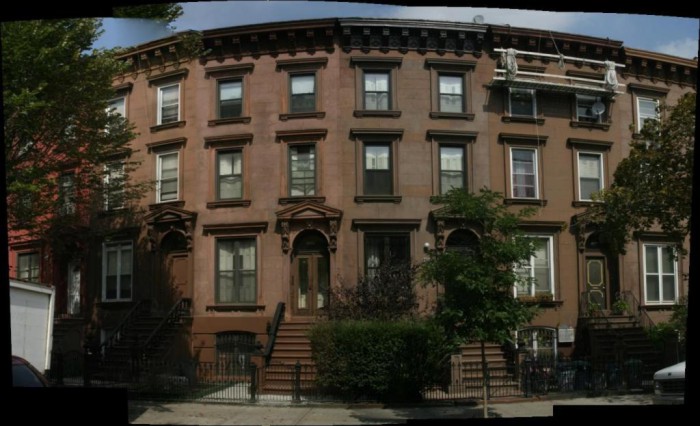
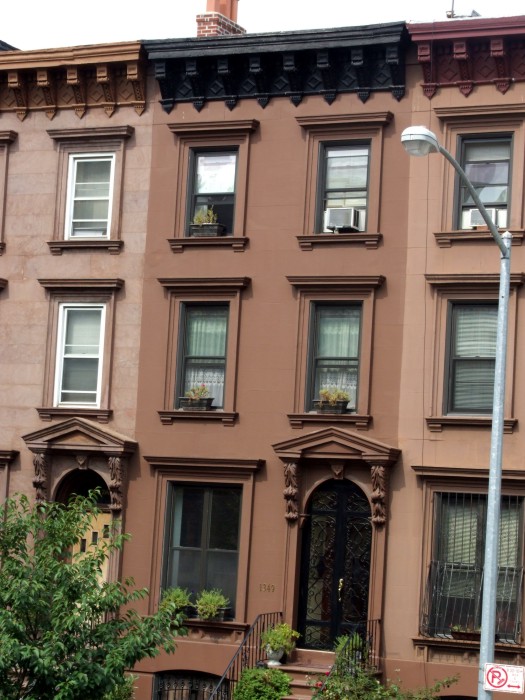
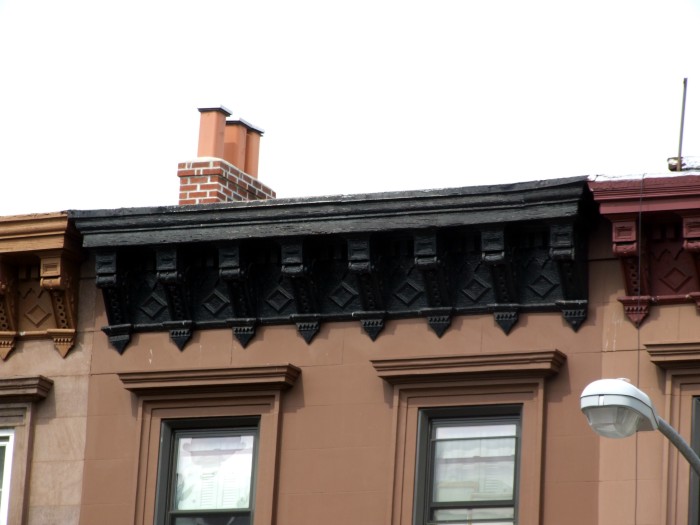
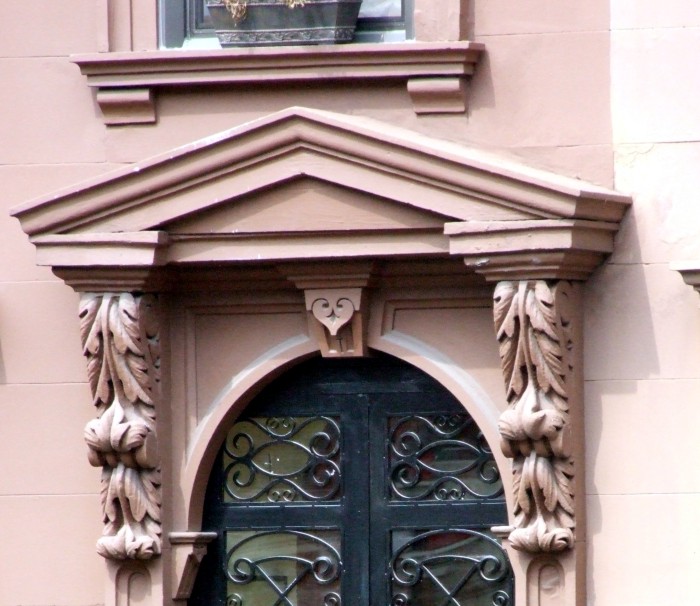





Made me homesick. I loved looking out my front windows and seeing that lovely row of brownstones across the street.
very handsome row. Amzi was a very busy man during this time. Brooklyn did not have many architects in 1878 which I am sure was good for Amzi. Amzi had been practicing Architecture in Brooklyn since 1860 before that he was in Manhattan where only a few buildings survive mostly in tribeca It seems like many of the popular architects from the late 1880’s and 90 came from Amzi office. Thanks MM for this history…